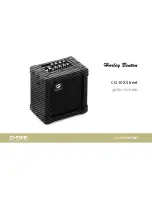
Genesis Manual Rev2.0 Copyright 2020, Nellis Engineering, Inc.
6
Ensure the two o-rings on the tail are clean
and generously greased with Molykote 111
silicone lubricant. Insufficient grease or
debris on the sealing surfaces can result in
flooding of the scooter. (Never grease the
grooves used by the lock strips.) Ensure the
nose plug cover is not installed, the trigger
is locked OFF with the tab behind the
trigger (Figure 4) to prevent operation and
the speed lever is rotated down to the OFF
position before connecting the battery.
Stand the DPV body on the nose, connect
the battery to the tail/motor of the DPV and
gently place the tail onto the body, ensuring
wires are not pinched. Ensure that the gap
between the tail and body is equal all the
way around and the tail is properly aligned
to the body. Position the nozzle struts at
the 3 and 9 o’clock, directly above the slot
in the body for the locking strips (Figure 5).
Press the tail straight down into the body
tube and hold it down while installing the
orange lock strips. A slight pressure is
created inside the DPV by this, which is why
the tail must be pushed down onto the
body when opening and closing. Slide the
large rubber band rearward to cover the
two slots and joint between the tail and
body, all the way around. This is to keep
sediment out of the seal area.
Note
The rubber band is not needed to retain the
locking strips or seal the DPV. It is there
solely to keep sand, silt or other debris out
of the joint, which may get into the o-ring
groove when the DPV is opened. At the end
of the diving day, the rubber band should
be slid forward so fresh water can flow
around the joint when it is rinsed and left
clear of the joint until the next dive, so
water can drain/dry out.
Figure 5
TAB BEHIND TRIGGER SPEED LEVER
DOWN (OFF)
Figure 4 – Trigger Locked OFF


































